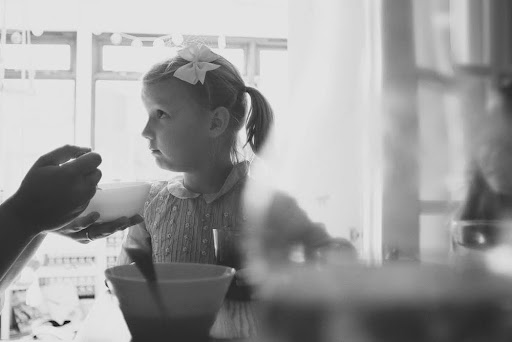Sending a child off to kindergarten can be scary for both the child and parents. Not only is the child surrounded by new environments and people, but the development of new lifestyle changes and habits is also inevitable.
To make matters more complicated, imagine parents’ apprehension about initially sending their child to school when their child has urinary or bowel incontinence. Most parents work diligently to potty train their children before sending them to school for the first time. But sometimes, despite the family’s efforts, bladder and bowel leaks happen!
As a pediatric pelvic floor therapist, you know that leaking is not the fault of the parents or child. But many families don’t know this! They get caught in the crossfires of teachers, school administrators, and even medical providers. Now, even state governments are stepping in to address this issue!

Can The Government Mandate Kindergarten Potty Training?!
A Utah state Congressman recently introduced a bill, H.B. 331, which would require a child to be toilet trained before beginning kindergarten! This bill would require the parent’s assurance of the child being toilet trained. If the child is found to not be toilet trained, the family would be referred to a social worker or counselor for support and later reintegration.
This bill has good intentions, aiming to protect overworked teachers from the burdens of diaper and toileting issues during the school day. But the problem is that in many cases of “accidents”, being toilet trained just isn’t the issue. Legislators, school teachers, and parents aren’t aware of the true issue.
As a pelvic floor therapist, your knowledge and skills give you the advantage to step up and educate your community. Your influence begins within the family’s homes. Reassure parents that they’re not being neglectful nor their child stubborn.
Let’s take a look at the real culprit behind many pediatric enuresis and encopresis cases: chronic constipation.

Relationship Of Chronic Constipation to Pediatric Urinary and Fecal Incontinence
Mechanisms of Constipation
Constipation is considered either functional or organic. Functional constipation accounts for 90-95% of constipation cases and is multifactorial in cause. Stool withholding, diet, routines, physical activity levels, and psychological issues can all contribute to functional constipation.
Organic constipation causes include abnormalities of the colon and rectum, systemic disorders, spinal cord abnormalities, neuropathic intestinal disorders, and drugs.
These are important to understand so that you can parse out the main contributing factors. Stool withholding is the most common reason for constipation in toddlers and young kids.
When stool is not eliminated, it backs up in the colon. This causes physical compaction of stool, which stretches the colon/rectum, and the cycle continues. When the bowel is stretched too much, children can lose the ability to recognize an urge, making them less likely to defecate.

Mechanisms of Incontinence
The stretch and strain on the bowel irritates the nerves, which then signals aggravation of the bladder. This is how constipation directly causes urinary incontinence.
Fecal incontinence occurs because children lose their ability to recognize bowel urges and stool leaks out. Parents may report that their child gets diarrhea, which can be the body’s way of attempting to evacuate the bowel.
There can be a lot of shame and embarrassment around bladder and bowel incontinence, but it’s not the fault of children. Fortunately, there are solutions (which don’t involve laws that exclude attendance from school).
Let’s take a deeper look at the causes of functional constipation and how you can address these behavioral and lifestyle factors to help improve your pediatric patients’ quality of life.

Functional Causes Of Stubborn Constipation In School Children
You’ve heard many kids tell you how painful pooping is. Their fear of pain greatly contributes to stool withholding because kids want to avoid painful bowel movements.
Social and environmental changes can also play a role in bowel habits or exacerbate their fears. Changes in routines, such as long car rides, or traveling can interfere with a child’s poop schedule. Transitions back into school can especially wreak havoc on their toileting habits.
This study documents how the rates of constipation decreased during Covid lockdowns because children had greater toileting flexibility at home while participating in remote schooling. In-person schools create a more stressful environment for children struggling with bladder and bowel issues, including:
- Decreased levels of physical activity
- Altered meal times and quantity/quality of food
- Availability of restrooms
When a child returns to school, educate parents on the importance of being diligent in tracking their child’s toileting patterns to prevent constipation. Parents should be tracking when their child poops/pees to keep the schedule consistent. Does the child poop after lunch or after school? Maybe they need a watch to remind them to use the restroom. School often can be overstimulating and distracting for kids, so remind parents to not simply expect that their child will go when they “need” to.
When re-establishing potty and bowel schedules for back to school, help parents to establish normal expectations. Their child’s bowel movements should be daily and the consistency should be type 3 or 4 on the Bristol Stool Chart. Keep in mind, even if a child is pooping soft stools every day, they could still be constipated! That’s why parents also need to be watching for the red flag of straining.
Bristol Stool Chart

Unpleasant toilet facilities can instigate fear and avoidance as well, especially in children with sensory sensitivities. Schools can also increase embarrassment around bowel and bladder issues in kids with dysfunctional habits.

Low physical activity levels affect bowel motility. Kids spend more time sitting in school. They are sometimes incentivized by teachers to not use the restroom or are afraid of missing out on class time or limited recess periods.
“Why would I want to waste time going to the bathroom?” This is the common narrative that rules a child’s mind. Social dynamics typically take priority in the minds of young children, masking the importance of toileting needs.
Ingestion of fluids, food, and medications affects children’s constipation. This goes without saying, but gut health is paramount when treating constipation. Adequate fluid intake, appropriate amounts of fiber, and a healthy diet are crucial for kids to establish a strong gut microbiome.
You can dive deeply into the dietary implications by learning through my Level 1 Peds online course. Here, you will learn how much fluid is necessary and what types/quantities of fiber are appropriate for good bowel movements. You will also learn how supplements and medications are used to treat stubborn constipation.
Let’s take a look at the pressing behavioral and lifestyle interventions that you can implement in the clinic today.

Behavioral Interventions To Improve Pediatric Constipation, Encopresis, And Urinary Incontinence
When treating pediatric chronic constipation, you must first look at desensitizing a child to the toilet. Their avoidance and fear of the toilet can be overwhelming to both the child and their parents.
Begin by establishing a good toilet sitting routine. The child should sit on the toilet 1-3 times per day for about 5 minutes after meals. After meals helps take advantage of the gastrocolic reflex, by which warm liquids or food stimulate peristalsis.
Have the child be consistent, even if toilet sitting is only once a day. The routine must be doable for the family. Make it at the same time each day.
While on the toilet, the child should focus on breathing exercises or may read a book. Do not allow video games, as these are distracting and anxiety inducing.
Proper toilet posture ensures good bracing and pressure regulation for bowel emptying. Toilets at home should allow kids to sit with hips flexed and feet touching the ground. A squatty potty and training seat may be appropriate, depending on the age of the child.
Before toilet sitting, some light core activation exercises can be helpful:
- Walking– get kids walking around the house or yard
- Psoas swings– activates and stretches the psoas to stimulate bowel motility
- Karate kicks
If a child is fearful of toileting, it may be appropriate to begin toilet sitting in a room other than the bathroom. Once the child is comfortable pooping in that environment, progressively move the toilet closer to the bathroom until they are no longer fearful of the bathroom.

Lifestyle And Activity Modifications To Improve Bowel Motility In Children
Educating kids and parents about the importance of daily physical activity is essential. When kids are sedentary during school days with minimal time for recess, the bowel receives less blood flow and stimulation.
Kids need to frequently and consistently run, jump, swing, and hang upside down! Exercise regulates colonic pressures, stimulates peristalsis, and improves blood flow to the bowel.
Encourage your patients to take daily walks to the park and spend time playing with friends, siblings, or parents. Motivate them to participate in sports that they enjoy.
Trampolines are excellent tools to help stimulate lymphatic flow and bowel motility. Rebounders are easier to get than large trampolines, and kids love jumping on them as well.

Targeted core, breathing, and pelvic floor exercises are important for kids to perform daily to help improve pressure regulation as, well. You can learn in depth about the implementation of exercises and manual therapy techniques for constipated kids in my online, self-paced course Peds Level 1- Treatment of Bowel and Bladder Disorders: Evaluation and Treatment of Dysfunctional Voiding, Bedwetting, and Constipation.
Or join us Live online August 24-25, 2024.
You can help your kids to integrate more smoothly into their classroom when they have smooth bowel movements. Let’s give these kids a sense of peace and belonging!
